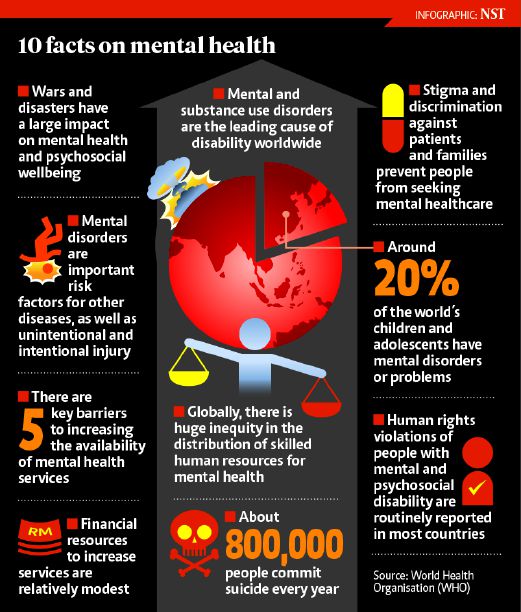What Is Partial Hospitalization
What Is Partial Hospitalization
Blog Article
What Types of Treatment For PTSD Are Available?
Treatment for PTSD assists you discover to manage your symptoms and reclaim control of your life. It can include oral medications or chat treatments. Psychotherapy, or talk therapy, is the most usual therapy for PTSD. It can occur individually or in a group setup.
Signs of PTSD can vary from being easily shocked to staying clear of activities and people. These signs can additionally affect relative and kids.
Cognitive behavior modification (CBT).
CBT focuses on changing unfavorable patterns of assuming and actions that may be causing PTSD signs. This treatment is commonly short-term and client-centered, with the therapist and client establishing therapy objectives with each other. CBT has been shown to decrease PTSD signs in numerous professional trials using clinician-administered and self-report steps of PTSD. These results are moderated mostly by adjustments in maladaptive cognitive distortions, with some studies reporting physiological, functional neuroimaging, and electroencephalographic modifications correlating with action to CBT.
TF-CBT makes use of psychoeducation and imaginal direct exposure to educate clients how to better regulate emotions and deal with their traumas. This therapy has likewise been revealed to enhance PTSD signs and symptoms in youngsters and teens.
Eye activity desensitization and reprocessing (EMDR).
EMDR is an evidence-based treatment that functions by assisting people process trauma utilizing adaptive data processing. It can be utilized on its own or with various other treatments. It has actually been revealed to be reliable in dealing with PTSD. EMDR is extensively made use of all over the world.
It starts with history-taking and a collaborative therapy strategy. Throughout this stage, you will certainly speak about the factor you are looking for treatment and determine traumatic memories you wish to focus on. The therapist will also teach you techniques to manage any hard or disturbing feelings that might emerge throughout a session.
Throughout the reprocessing stage, you will recall a traumatic memory while paying attention to a back-and-forth movement or sound (like your provider's hand crossing your face) until the negative photos, ideas, and sensations connected with it begin to decrease.
Somatic experiencing.
A therapist that concentrates on this strategy will certainly assist you become aware of the physical sensations that accompany your PTSD symptoms. They'll also educate you just how to determine your autonomic nervous system and its role in the trauma response.
Unlike other trauma therapies, somatic experiencing does not concentrate on memories or feelings. Rather, therapists work to launch the stress from your body and ease your signs.
This treatment has actually been located efficient in a number of support groups randomized controlled trials. Nonetheless, the arise from these studies are restricted by tiny example dimensions and other methodological shortages. These shortcomings restrict the outside credibility of these findings.
Present-centered therapy.
Present-centered treatment (PCT) is a non-trauma concentrated psychotherapy that aims to boost people' connections, impart hope and optimism, and promote analytic. While PCT does not have exposure and cognitive restructuring strategies of trauma-focused treatments, it has been shown to be as reliable in lowering PTSD signs as trauma-focused CBTs.
In a series of eleven researches, PCT was contrasted to a wait checklist or marginal get in touch with control condition and to TF-CBT. PCT transcended to the WL/MA conditions in reducing self-reported PTSD signs and symptoms at post-treatment, and it was connected with decreased therapy failure rates. Nevertheless, the effect dimension was not large enough to be medically significant.
Meditation.
Reflection helps individuals soothe their nervous systems and technique self-care. This therapy concentrates on the physical feeling of breathing, and people might get sidetracked by thoughts or feelings, however it is essential to return their emphasis to the breath repeatedly.
PTSD affects not just those who have actually directly experienced the trauma, however also witnesses and those that work with emergency situation responders or law enforcement. Signs of PTSD can include invasive, upsetting memories, recalls or nightmares, and trouble concentrating or resting.
Avoiding excruciating memories and feelings is an usual reaction to injury, however it just makes symptoms even worse. It is very important to seek therapy prior to PTSD hinders your life and relationships.
Twin diagnosis therapy.
Symptoms of co-occurring PTSD and compound make use of problem (SUD) are frequently connected and both must be attended to in recovery. Individuals who experience PTSD can be most likely to turn to alcohol or drugs to self-medicate and briefly alleviate invasive ideas, flashbacks and adverse mood swings.
PTSD signs and symptoms include frequent and involuntary upsetting memories or desires, vivid and dissociative responses that feel like experiencing again the occasion, avoiding locations, individuals, conversations, or items related to the injury, feelings of hypervigilance and being always on guard or conveniently surprised, and sensations of psychological pins and needles.
Twin diagnosis treatment entails therapy and learning much healthier coping mechanisms. It may likewise entail pharmacotherapy, such as antidepressants or mood stabilizers.